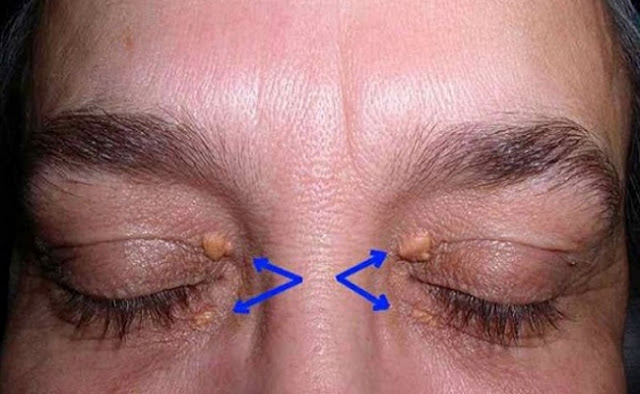The study published in the British Medical Journal revealed its findings that show a link between heart diseases and a health condition known as xanthelasma (xanthelasma palpebrarum). This condition appears as a sharply demarcated yellowish deposit of fat underneath the skin, usually on or around the eyelids. These yellow formations occur in the upper or lower eyelid near the inner corner of the eye.
The Connection Between Heart Disease and Xanthelasma
Both sexes, and especially after 40, can suffer from this condition. These yellow growths are the result of cholesterol deposits and indicate a higher level of cholesterol in almost half of the patients affected with this condition.
People with xanthelasma usually seek medical help because these growths are unattractive, otherwise, they are soft and painless and do not affect vision.
In fact, without considering them as a warning of a more serious condition, and despite their re-emergence after removal, people most often decide to remove these yellowish growths because their appearance is far from pleasing to the eye.
Scientific Evidence
The link between heart disease and xanthelasma has been scientifically confirmed by a recent Danish research. The professor who led the team, Mr. Tibjaerg Hansen came to conclusions that will alter the way we see these seemingly harmless growths, which are ignored as irrelevant by both patients and doctors.
Women with xanthelasma have an 8% higher risk of heart attack, as opposed to those who are not affected by this phenomenon. It has been proved that women have a lower risk of heart disease than men. Moreover, researchers in this study explained that xanthelasma allows accurate prediction of heart disease in this particular group of patients.
On the other hand, it has been proven that men are more prone to heart disease. Men affected with xanthelasma are at a 12% higher risk of heart attack, and men aged 70-79 are at an even higher risk.
This research discovered that the presence of xanthelasma cases in each age group indicates an increased probability of heart disease, heart attack and death. Both men and women who have these yellow growths on their eyelids are likely to experience a heart attack, and in 10- year period, they may even be life- threatened.
The research concluded that xanthelasma, independent of other factors such as high cholesterol, obesity, smoking and high blood pressure, may indicate a severe atherosclerosis, heart attack, heart disease and death.
So, in case you notice that these yellow growths appear on your eyelids, it is highly advisable that you immediately check your cholesterol levels.
